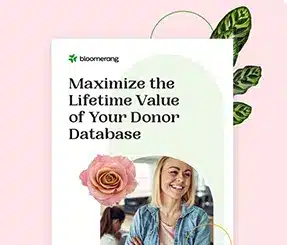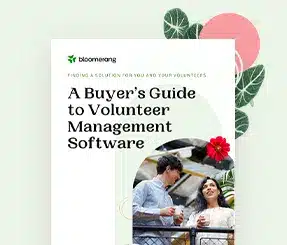Thinking About Donors as Customers


Full Platform Overview Chat With Us



Full Platform Overview Chat With Us




Donor Cultivation. Customer Service. Are they the same, similar, or unrelated?
This is an important question. Like philanthropy, customer service is uniquely American. Or, at least, American culture has put an indelible stamp on both.
In Europe, you’ll notice that the waiter never asks how meat should be cooked. The meat just comes as it was cooked. The coffee comes black or with cow’s milk. No one inquires if soy, almond, or oat milk is preferred. This is the overall experience regardless of region. Typically, this is actually not a problem, and we adjust our attitudes.
For many of us, the problem answering the question “Are your donors also your customers?” is that most customer service in the US is self-serving. Consider the American real-estate agent who may try to change your mind about your preferred neighborhood just because they have an active listing somewhere else! “Honestly, this apartment would be a perfect fit for you—it’s a great area, a lovely building, and close to public transport.” “But that’s not where I want to live,” you say. Silence.
In sharp contrast, the very definition of “service” is to be other-centered. Donor cultivation is other- centered too; we even have a name for the best way to practice it–donor-centered. But the fact is we also have a self-serving agenda: to secure revenue for our worthy nonprofit. Not too dissimilar from the real estate broker’s agenda to earn his commission. And maybe that’s not so bad.
Innovative fundraising researcher Adrian Sargeant, co-director of the Institute for Sustainable Philanthropy, says, “Nonprofits are a means to an end for the donor. Some of the truest words ever spoken about donor motivation are from marketing philosopher-king Seth Godin: ‘We support a charity or a soccer team or a perfume because it gives us a chance to love something about ourselves.’ When people give to you, they’re not loving the charity. They’re loving themselves.”
The service provider often pretends that they genuinely care when in fact, they’re just trying to close the sale. Isn’t that often true for fundraisers too?
Sargeant maintains that “Donors are fundraising’s customers. And only satisfied customers remain customers.” David Dunlop, former senior development officer at Cornell University and inventor of Moves Management, boils it all down to “changing people’s attitudes so they want to give.”
The truth is both the field of fundraising and the practice of customer service have their “foot in the door of puberty,” to borrow John Steinbeck’s turn of phrase. Which means we are dealing with many awkward practices.
One sticky wicket is that the “customers” often don’t know what they want. Donors frequently need guidance about where and how their gifts will have the biggest impact. On the other hand, we know that donors want a say about where their donations go. It’s been demonstrated numerous times that the more options you give donors about how their gifts will be used, the higher your returns are likely to be.
The subtext here is that Americans place a premium on choice.
Offering donors a choice can increase their satisfaction and engagement with your nonprofit, leading to increased support and donations. However, it’s important to balance between providing choices and simplifying the donation process for your donors. Too many choices can be overwhelming and paralyze a prospect’s decision-making.
One final point: the donor/customer who doesn’t yet know what he or she wants isn’t really a donor/customer until you provide the case for support. Many nonprofits don’t make the case, thinking it’s obvious why support is needed. But that’s ill-informed thinking. Your case should be made in a compelling way that speaks to the donor.
So do, in the best sense of the word, treat your donors as “customers.” You will feel less inhibited about selling your mission and soliciting funds AND also raise more revenue.
Comments